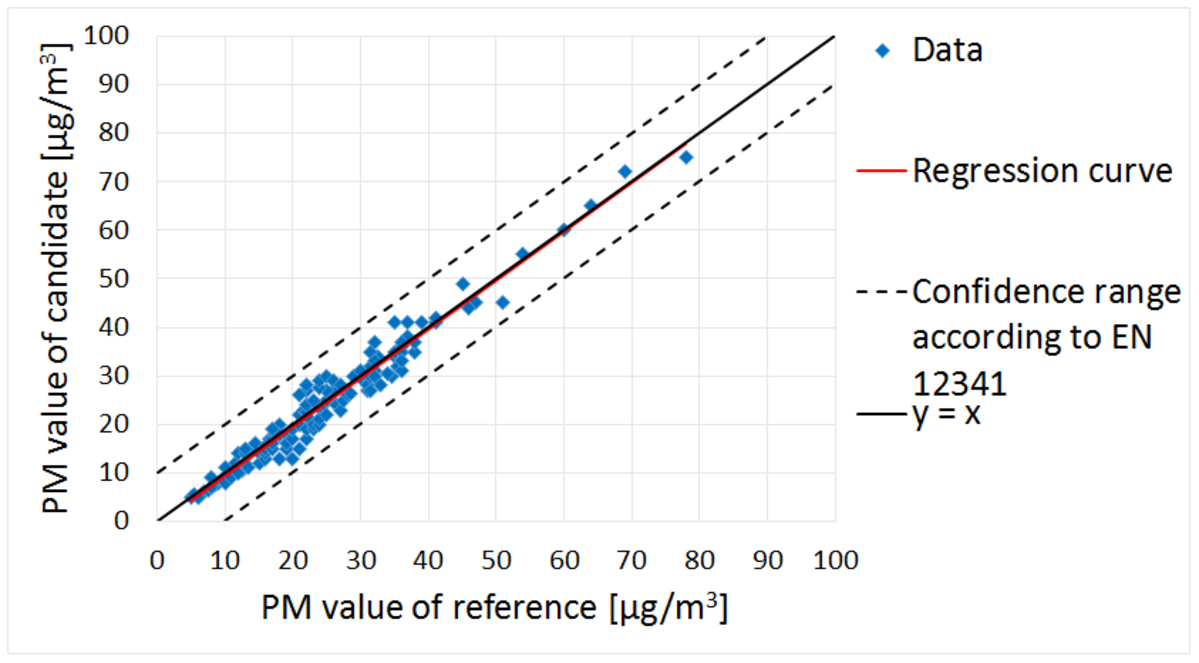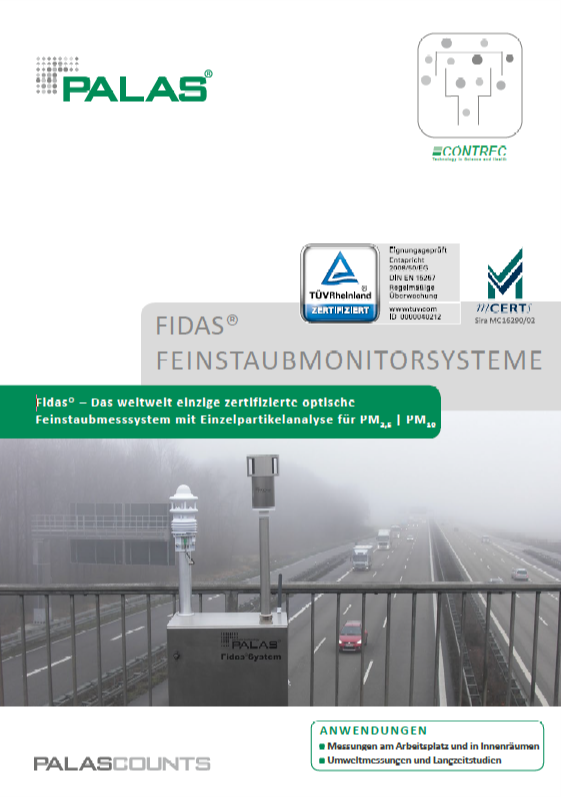
---> Download <---
For further information we are at your disposal, you can contact us via contact form or by phone 044'746'3220.
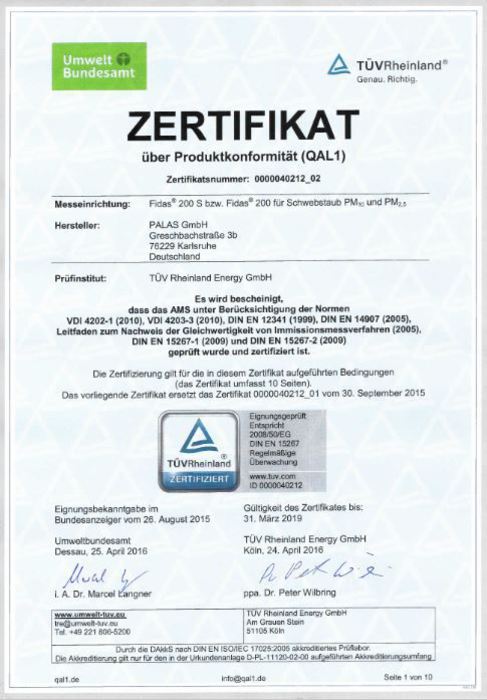
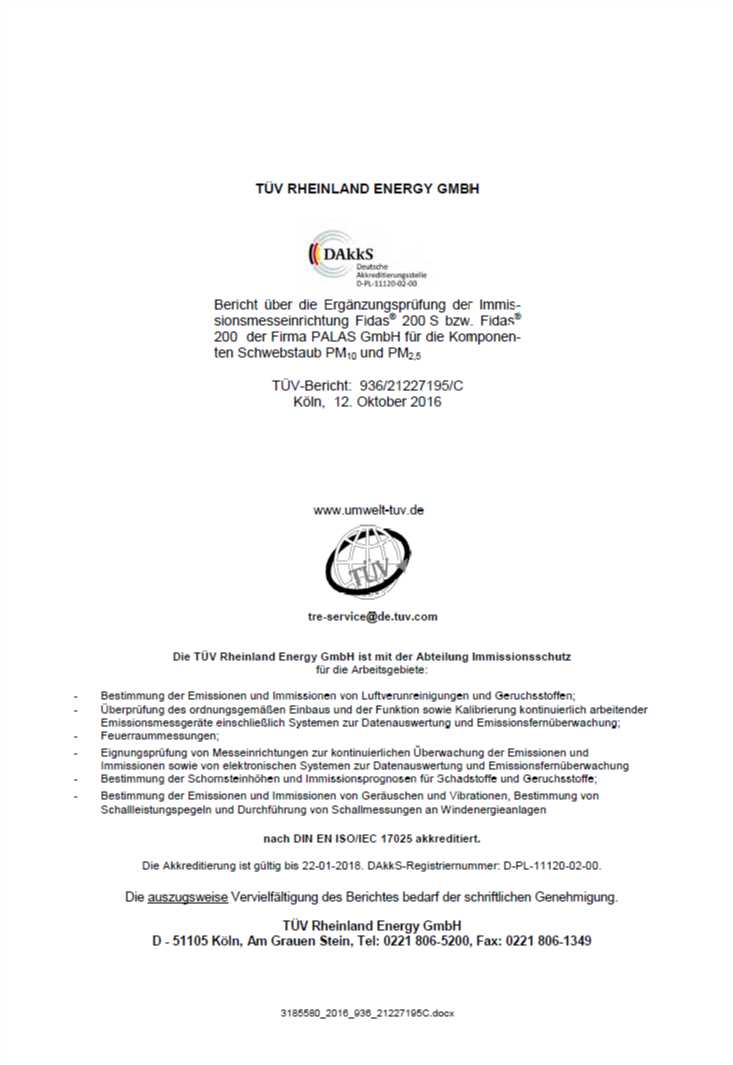
---> Download EN certificate <---
---> Download EN report <---
Click on the link to download: Product conformity certificate according to EN 16450 for Fidas® 200 S and complete test report for Fidas® 200 S
In addition, Fidas® 200, Fidas® 200 E and Fidas® 200 S are also approved and certified in the United Kingdom according to the MCERTS Performance Standards for CAMS and MCERTS for UK Particulate Matter (Defra Approval) requirements. The corresponding certificate is published under MCERTS/DEFRA Approval, as is the test report.
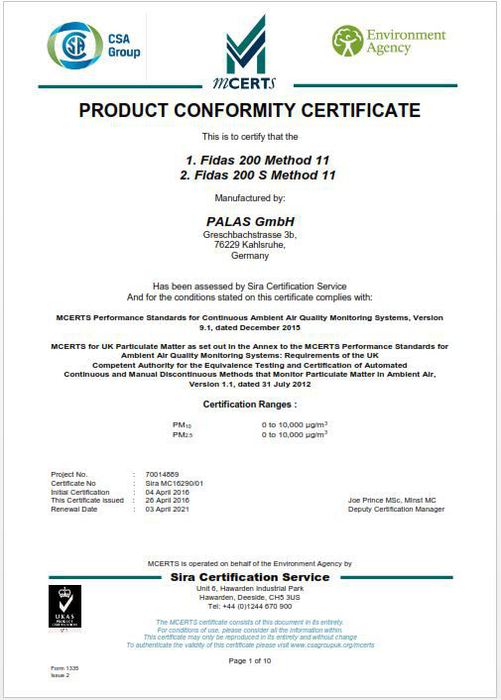
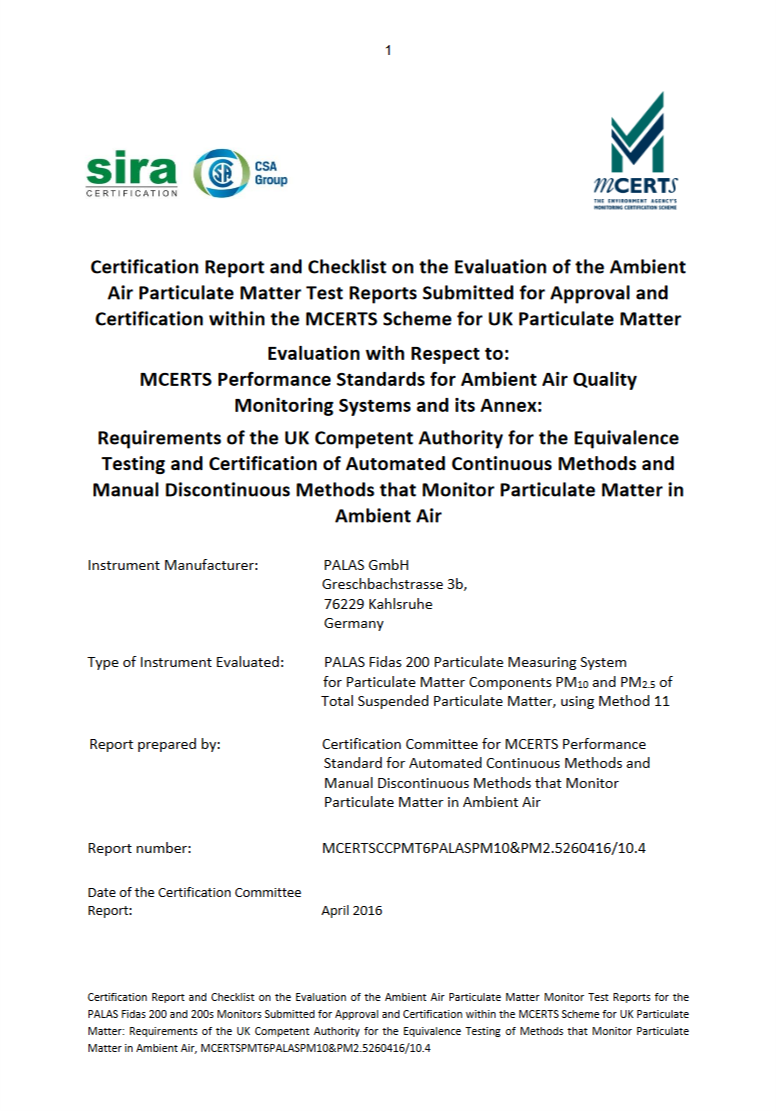
---> Download MCert certificate <---
---> Download MCert report <---
Click on the link to download: MCERTS/DEFRA Approval for Fidas® 200 S and total for Palas Fidas 200 S
The Fidas® 200 uses the recognized measurement technique of optical light scattering on individual particles and is equipped with an LED light source of high light intensity (dp,min = 180 nm), high light stability and long service life. The calibration of the device can be easily and quickly checked and adjusted at any time with the aid of a monodisperse test aerosol, even when installed.
The sampling system of the Fidas® 200 works with a volume flow of approx. 0.3 m3/h. It is equipped with a Sigma 2 sampling head according to VDI 2119-4, which enables representative sampling even in strong winds, as well as a drying section, which prevents falsification of the measurement due to condensation effects at high humidity. The drying section (Intelligent Aerosol Drying System - IADS) is controlled on the basis of outside temperature, air pressure and relative humidity. These measured values are provided by a weather station; wind speed, wind direction and precipitation can also be measured on request. A filter holder for plane filters (ø 47 mm or ø 50 mm) is integrated into the sampling system, which enables, for example, subsequent chemical analysis of the aerosol composition.
The Fidas® 200 offers a wide range of communication options and allows complete remote control and maintenance of the systems as well as online data access. The supplied software offers a wide range of options for evaluation (including extensive statistics and averaging calculations) and export of measurement data.
The actual aerosol sensor is an optical aerosol spectrometer, which determines the particle size according to Lorenz Mie via scattered light analysis on individual particles. The particles move individually through an optically delimited measuring volume, which is homogeneously illuminated with polychromatic light. Each particle generates a scattered light pulse which is detected at an angle of 85° to 95°. The number of particles is measured by the number of scattered light pulses. The height of the scattered light pulse is a measure of the particle diameter.
Precise optics, the high light output of the polychromatic LED light source and powerful signal processing electronics with logarithmic A/D conversion enable a lower detectable particle size of 180 nm. The detection of smaller particles, which are particularly found near roads in high concentrations, is important for the correct determination of PM2.5, for example. Fig. 4 shows the influence of the lower measurement limit in comparison with a system whose lower measurement limit is 300 nm.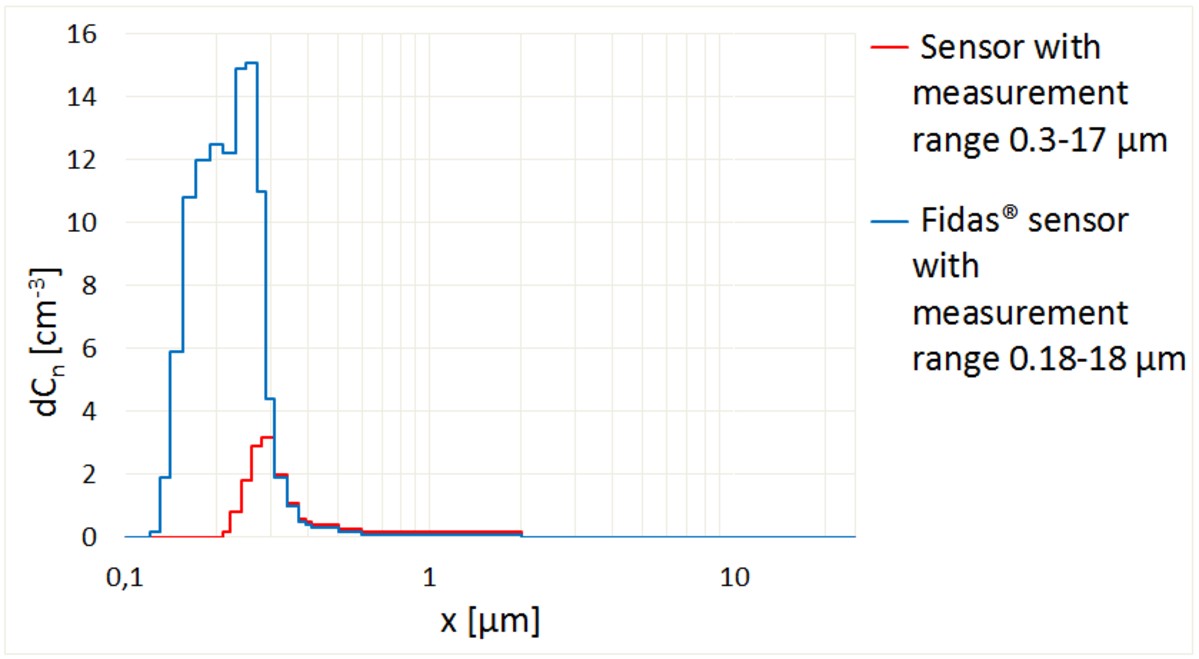
Higher sensitivity with the Fidas® fine dust measuring system for the particle size range 0.18 - 18 µm
The better the classification accuracy and resolution of a particle measuring instrument, the more accurately the particle size distribution can be determined. The light source of the Fidas® 200 enables a calibration curve without ambiguities and thus a very good size resolution or classification accuracy. The measuring volume of the Fidas® sensor is precisely delimited optically using the patented T-aperture technology, which enables particle measurement without edge zone errors and thus also contributes to precise size determination. The powerful digital signal evaluation enables coincidence (simultaneous presence of several particles in the measuring volume) to be detected and, if necessary, compensated.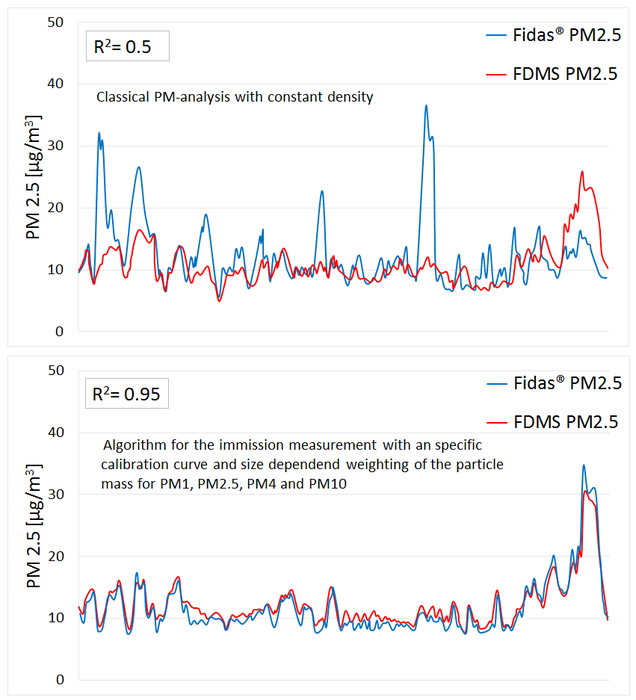
Comparison of algorithms for the conversion of particle size distribution into PM values
To determine the mass or mass fraction from the measured data, the particle size distribution is first calculated using a factor (again dependent on the particle size). Here it is taken into account that the environmental aerosol comes from different sources (e.g. combustion aerosol, tyre abrasion, pollen) depending on the particle size (see Fig. 5). A mass fraction such as PM10 is then obtained by applying the corresponding separation curve (see EN 481) to the particle size distribution determined. Although the optical measuring principle does not determine the particle mass directly (equivalence method), i.e. the exact correspondence to gravimetry is not guaranteed in every case, the empirical knowledge used to prepare the measurement data permits a very good correlation with the standard reference measuring method (see Fig. 6), as was demonstrated in the suitability test.